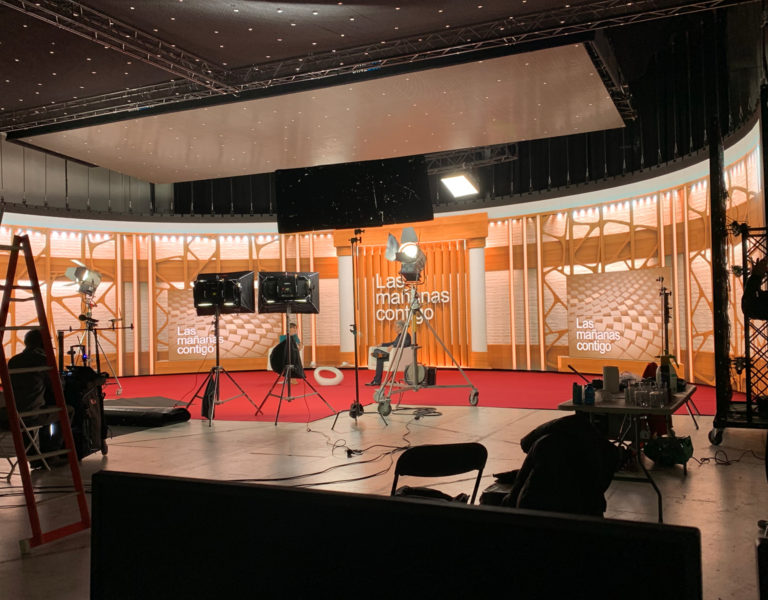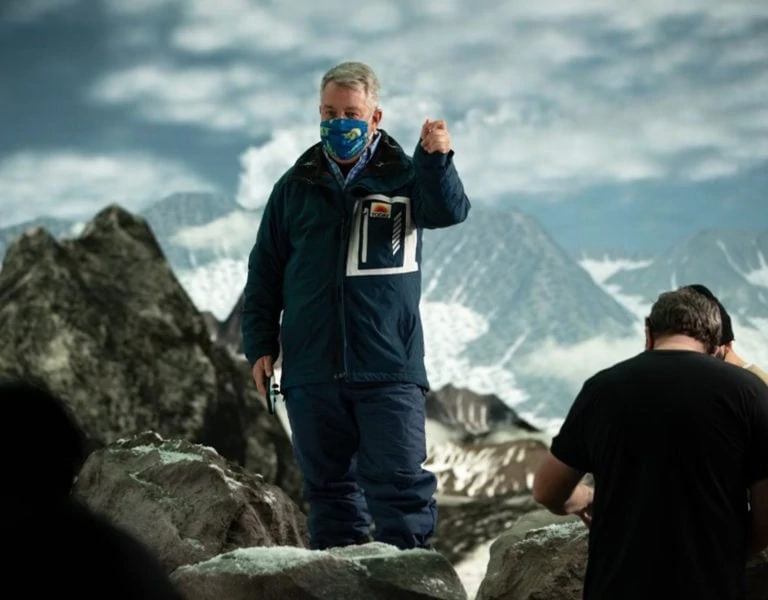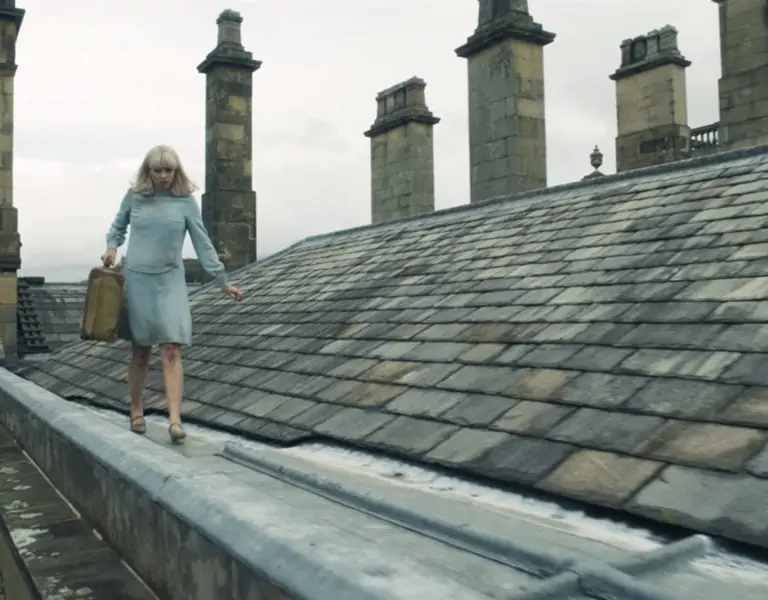Green and pleasant
Ravi Doubleday reveals how he rose to the challenge of lensing a Mark Rylance-fronted feature for his long-form debut.
There’s a whiff of the Lynchian to writer-director-producer Fridtjof Ryder’s bright debut, which frames a dark filial drama against the vast greenery of rural Gloucestershire. One of Inland’s leads, Academy Award-winning actor Mark Rylance, notes parallels with body horror Eraser Head (1977) and thriller Blue Velvet (1986): “This film wakes me at night… I am disturbed and excited by it at once,” he muses.

It’s a comparison any filmmaker would jump at, but one made even more astounding given that Ryder and his cinematographer, Ravi Doubleday, were just 20 years old when Inland was shot. Dubbed a modern folktale, the story begins with the unnamed protagonist (Rory Alexander) checking out of a mental hospital before returning to Gloucester – the filmmakers’ home turf – where he moves in with father figure Dunleavy (Mark Rylance). However, the spectre of his mother’s disappearance years earlier looms.
“The film’s genesis comes from my hometown, from my first loves growing up, and of course from films,” explains Ryder. “The borderland between the myth and the present, the thin line between the past and now, in rural England, walking through the landscape, often feels so powerful it makes me cry.”

To capture those affecting landscapes, Ryder looked to childhood friend and fellow film school student Doubleday. Doubleday, now 23, has an interesting background in cinema; as a child, he was educated at a Steiner School, where pupils are often discouraged from watching any screens. Instead of watching children’s TV, a young Doubleday was exposed to a diet of screen classics through his father, works by Bergman, Kubrick, Hitchcock and Lynch, among many more. “All those films had a really big impact, even before I was thinking about making films at all, because as emotional experiences, they were so visceral,” he says. “I remember seeing The Birds when I was about nine years old and being completely horrified!”
It’s an upbringing that has shaped his cinematic sensibilities and is reflected in the lensing of his and Ryder’s debut feature. Shot in July 2020, Inland was born from the pandemic-induced hiatus in the filmmakers’ studies which saw them return home to Gloucestershire.
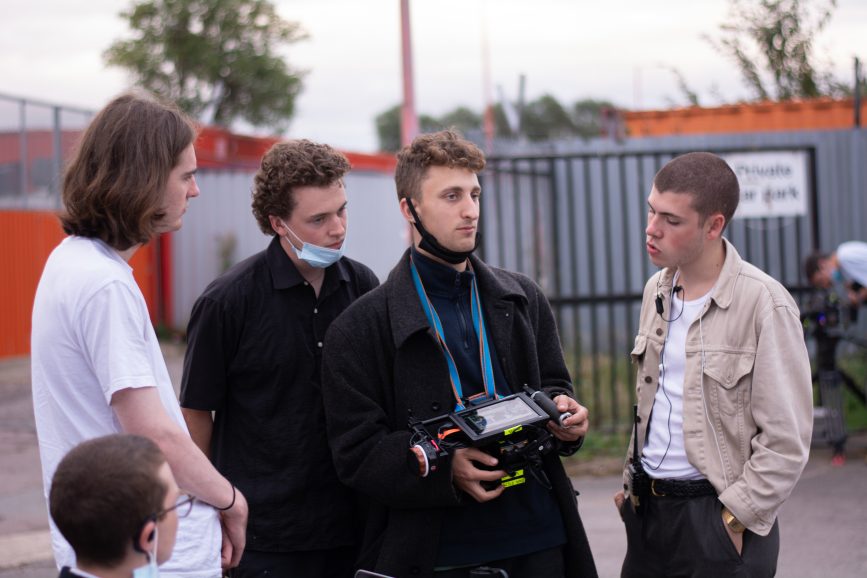
The aesthetic starting point for the feature, which grew from one of the pair’s college-shot shorts, was a “hyper-formal” perspective on contemporary English cinema, as Doubleday remembers. “We’d been talking a lot about the traditional English export of social realist films, and we thought, let’s take that setting and that geography we know so well but look at it through a lens which English cinema isn’t used to being seen through.”
“We didn’t like the droll way some people were approaching that kind of cinema, where you shoot coverage with the camera on the shoulder, and there isn’t that kind of process given to the composition of each image. It didn’t do anything for us… Instead [for Inland], we knew the camera was going to be still all the time; we wanted the presence of the forest to be present in every frame, fixing our characters with this cold, all-seeing eye.”

In terms of visual references, Doubleday explains: “Fritdjof and I didn’t have any references that shaped the look in a particularly holistic way. For us, it was more about taking certain stylistic elements from other films and using them as a part of that whole. For example, for our contrast/black level, we talked a lot about the bleach bypass look that films like Naked use, whilst the texture and lighting of the city exteriors were taken from films like Under the Skin, which deals with that kind of urban location in such a visceral way.”
The idea behind Doubleday’s compositions was placing the forest – which he likens to a cathedral – at the heart of the narrative. The reason for adopting the 2.39:1 aspect ratio was to convey the epic scale of the verdant landscape. He also made the forest central to the rest of the camera work. “For both me and Fridtjof, compositionally, I think the film comes from a much deeper place. Preproduction was mostly spent talking about how we wanted the frames to express that oppressive feeling of the forest and the mother watching everything. Once we got onto set, it became quite an intuitive process; putting the camera down, choosing a lens and then talking about how it made us feel in the context of the story”.
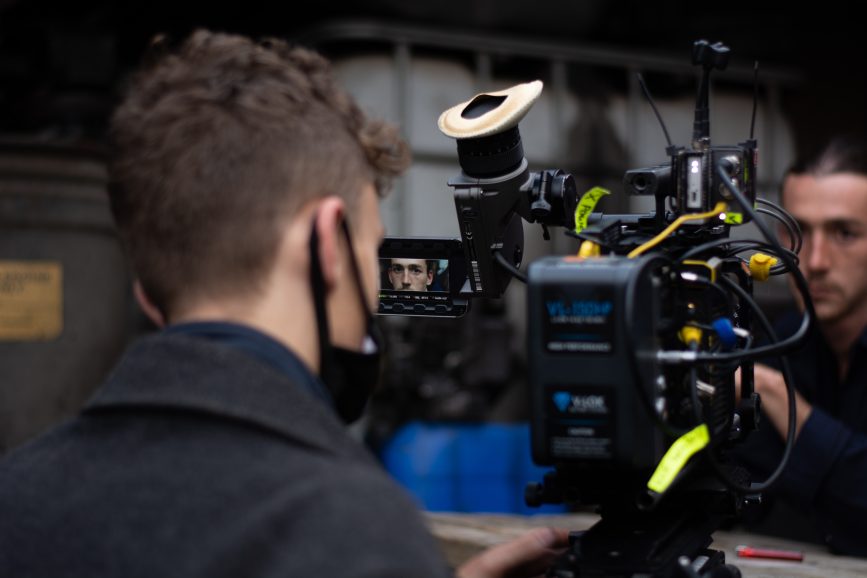
Doubleday is proud of how he and Ryder have created such a distinct visual language for the film, also mentioning their use of distinctive extreme close-ups. “The face is the whole frame; you can see a whole landscape in it. It’s those 80mm, 100mm close-ups that I really adore. I think they look very unique. We pushed and pulled the form and did something fresh with it.”
Inland’s vast sylvan landscapes were captured on the ARRI Alexa Mini, with Ultra Primes used for the present-day scenes. The camera and lens package came from Elliot Gilfoyle at Video Europe Bristol, with a small lighting package from Visual Impact and DVA Films.
“As everyone is aware, the picture that comes out of the Mini is excellent, and it’s a camera that you can push incredibly hard,” Doubleday says. “If you don’t have much time or many resources, which we didn’t, you can put it in an environment and just shoot – it’s so versatile.”

He is alluding to the compact camera and lighting team that helped him lens the film; gaffer Jacob Bacon, focus puller Charlotte Nind, and clapper loader Edson Caldas. Keeping the crew small was necessary given the budget and also useful during the pandemic when the film was shot. Consequently, they built a very strong bond.
“I think filmmaking is a process that can easily become very compartmentalised, but because we were such a small team it felt like we were all down in the trenches together,” the cinematographer comments. “They really were the bedrock of that shoot, and I’m very lucky to have worked with each of them so closely over the last couple of years”.
The size of the production also presented some unique challenges to Doubleday and Bacon’s lighting of the film; as Doubleday says, “Because our lighting department was just one person, it restricted the amount of work we could do with frames and lamps. It was more a process of shaping and controlling what was there naturally in many of the locations. For example, during the garage interiors, it became much more about looking at the existing sources and occasionally augmenting them with our lamps. It doesn’t always create the prettiest images, but it feeds back into the social realist elements of the film and plays into how naturalistic those locations and those performances feel.”
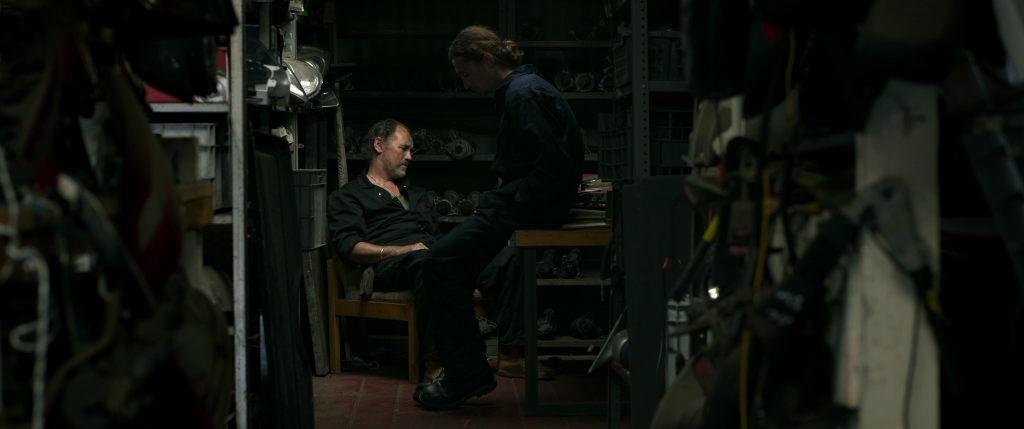
The narrative is punctuated by dream-like flashbacks, for which the DP chose P+S 2x Kowa Evolution anamorphics to emphasise the sequence’s visceral nature. “The contrast between the spherical and anamorphic lenses is a manifestation of the battle our character is going through. The Ultras are characterful in a real, humble way, but there is a kind of magic that only anamorphic can bring. There is so much subjectivity in those flashbacks; in some way they are more a symbolic representation of that relationship between our man and his mother than they are any strict reality. I think the distortions and imperfections of those lenses really stress that feeling – they’re so crazy; it almost feels like you’ve stuck a kaleidoscope on the front of the camera.”
This emphasis on the woodland extended into the grade, crafted by Final Frame’s Susumu Asano. “The starting point was that the green really had to be present, and then pushing those dark blacks as well – stylistically, that’s something [Ryder] and I are big fans of.”
The DP mentions ‘master of light’ Darius Khondji ASC AFC’s influence in this regard, commenting: “We wanted to stress the magic realist elements of the world and make the darkness feel almost Gothic – like there really is some old magic working at the edges of the frame.”
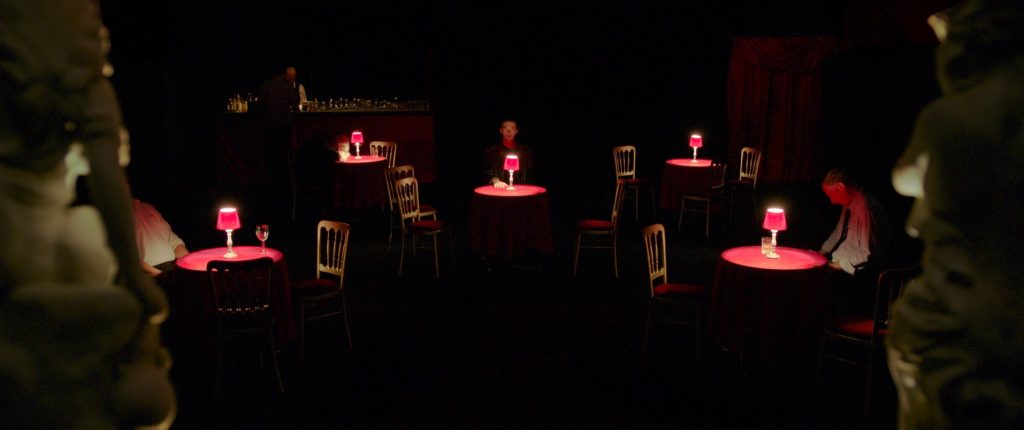
The most stylised use of this approach to darkness takes place in an unearthly brothel, which was actually shot in Lansdown Community Hall, Stroud. Because the design budget was so limited, the location was dressed with black stage hanging, and then large sections of the remaining wall were comped over with black in post and crushed in the grade to give the mysterious impression of a room that exists outside the real world, entirely shrouded in darkness. To light this Faery Queens set, which during the day is a large, airy space used for community activities, the team needed to come up with a simple system which would expose faces without casting too much light on the set, revealing the true space.
“For the wides, because we didn’t have the power to light the thing consistently, we stuck to using the tungsten practical lamps on the tables, and then for the close-ups, to soften up the source, we placed a large china lantern above the table and dimmed down the practicals,” Doubleday explains. “It definitely isn’t the most consistent thing you’ve ever seen – but it works for the space and for the mood.”
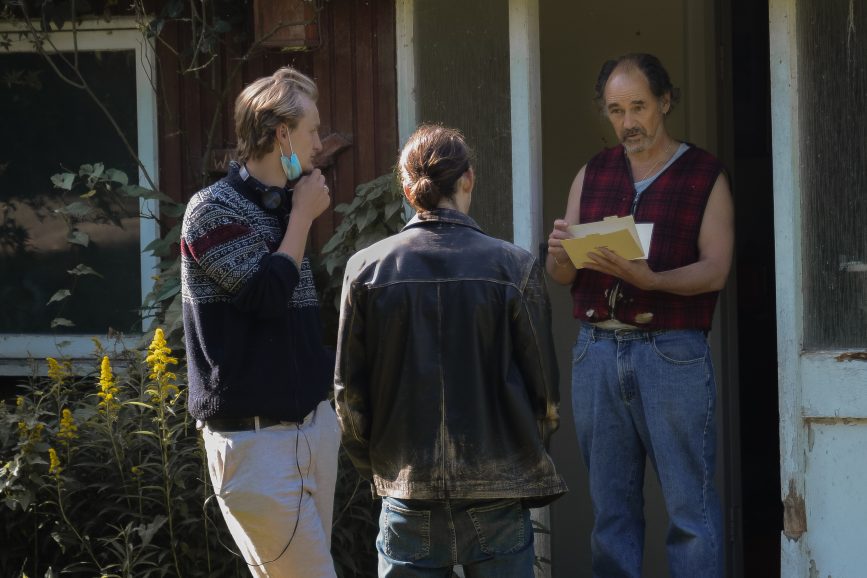
With his background in theatre, Ryder’s directorial approach was not to focus too much on blocking or staging scenes, encouraging Rylance and Alexander to move freely within the sets and putting an emphasis on the performances rather than the camera. As a result, all the spaces where the actors were moving around were lit 360 degrees. “Sometimes you can see that a bit – it definitely pushes against that instinct to polish everything, it’s rough around the edges – but being a part of creating that stage for the actors to play in was amazing,” Doubleday says.
This approach from Ryder prompted a lot of on-set improvisation, especially from Rylance, as Doubleday continues: “It’s so much fun operating around a performer like Mark [Rylance] when you’re not blocking – from time to time he would go completely off piste, and you just have to follow him. It’s almost like you’re making a play… It’s so interpretive: you’re there on the ground, and you’re just moving as part of the same unit.”
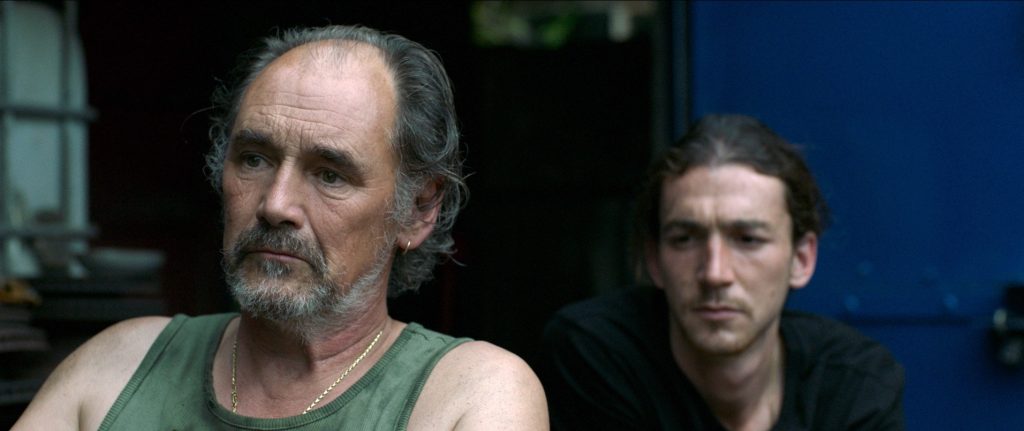
Meanwhile, his and Ryder’s creative collaboration continues to thrive: the pair are in early development on their second feature together. “It’s a real pleasure to work with someone whose ideas are so developed, both literary and cinematic,” says Doubleday of the director. “Inland is a very special film because it was a marriage of our tiny resources with a deeply held sense of place, time and community. It was the feeling that you’re making something that matters outside of business or career – the story, the form, and the people are the things that matter. It’s like nothing else.”
Inland is in cinemas from 16 June.

